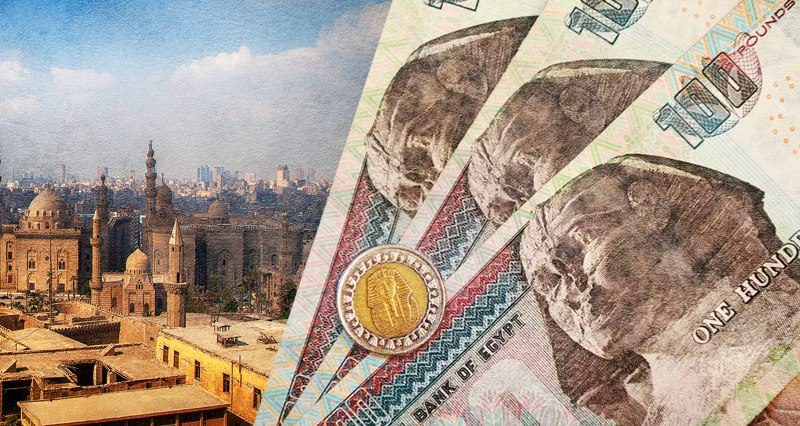Upon the arrival of the coronavirus pandemic, global economies took a massive hit and experienced a global recession. In their newly published reports, London-based research, consultancy, and publishing firm, Oxford Business Group (OBG) and the International Monetary Fund (IMF) reviewed and assessed Egypt’s economic resilience during Covid-19.
The OBG’s Covid Response Report (CRR) was released in collaboration with Hisham Ezz Alarab, former chairman and managing director of CIB Egypt. The IMF’s latest forecast for the country’s economic performance during 2020 included projections for Egypt’s economic growth over the next three years.
In a recent interview with satellite channel DMC, Egypt’s Minister of Finance Mohamed Maait also commented on the country’s economic progress and shared the ministry’s projections for the near future.
Here are the key takeaways on Egypt’s growth and recovery as it gradually climbs back from 2020 and into the near future.
1. Egypt’s Growth and Recovery in Numbers
On Friday, January 7, the IMF executive board released its complete first review of Egypt’s 2020 economic reform program. Later in January, Maait commented on these figures. In his televised statement, Maait clarified that Egypt’s state revenues are expected to decline by at least EGP150 bn in 2021; following an EGP200 bn slump in 2020.
The IMF emphasized that the country’s termination of its partial curfew and lockdown measures kickstarted the economy’s “early signs of recovery“. The report traces Egypt’s recovery back to a $5.2 bn loan granted by the IMF in 2020 to resolve outstanding payments due to Covid-19. The last portion of this loan is designated to recover budget deficits; as per Maait.
- Budget deficits: prior to the pandemic, the Egyptian government had expected to lower its budget deficit to 6.3% of the gross domestic product (GDP) in 2021; rather than remaining at 7.9%. The IMF projected the deficit to decline to 5.1% in FY 2022/23 and 4.4% in 2024/25. Maait noted that the state budget will achieve an initial GDP surplus of 0.5% in FY 2020/21; rising to 2% in 2022/23 and maintain a 2% average growth rate till 2025.
- Economic growth: the IMF expects Egypt’s economy to grow by 5.5% during FYs 2021/22 and 2022/23. This growth is expected to surge up to 5.8% in 2024/25.
- GDP growth: the ministry revealed a 3.6% GDP growth amidst the pandemic in a meeting with HSBC, Standard Charred Bank, and foreign investors in the IMF’s 2020 “autumn meeting”. The IMF’s review revealed a 2.8% growth forecast in the country’s GDP for FY 2020/21; compared to its previous 2% forecast for the same year during the standby agreement. This is after the country’s Finance Ministry had projected a 6% GDP growth before the pandemic.

Egypt’s Minister of Finance Mohamed Maait – Photo via Amwal El Ghad
While Maait noted that the aviation sector and the tourism sector alongside other sectors reliant on it were severely hit by the pandemic, the following sectors managed to shield themselves against the ongoing economic downturn caused by the pandemic according to OBG’s aforementioned report.
2. Sectors Relatively Unharmed in Egypt’s Pandemic-Struck Economy
The sectors that were hit hard significantly contributed to a 9.6% unemployment rate in the second quarter of 2020, according to Egypt’s Central Agency for Public Mobilization and Statistics (CAPMAS). But how did the relatively less harmed sectors performing around this time?
OBG’s review mapped out Egypt’s 4-year progression from 2016-2020 and its effectiveness regarding fiscal and sectoral reforms implemented with the $12 bn IMF loan granted back then.
a) Banking and finance: at the forefront of this industry, the report mentioned CIB’s Covid-response through its digitized services, intercontinental expansion, and monetary support for small and medium-sized enterprises (SMEs). The country’s fintech advancements in e-payments include reformed frameworks for digital banks and facilitated government payments with its prepaid “Meeza card”. These technological advancements strengthened the industry during the Covid-19-motivated digital transformation.

Digital Banking.- Photo via Daily News Egypt
“Egypt’s banks were well placed to tap the many openings emerging across the continent, having until now maintained their focus primarily on the domestic market.”- Karine Loehman, OBG’s Regional Editor for Africa.
b) Trade and investment: Egypt’s inter-continental trade activities within the Common Market for Eastern and Southern Africa (COMESA) fortified its position in Africa throughout 2020, as per OBG’s report. Its successful completion of projects with Nile-basin countries enabled funding opportunities for Egypt in critical times.

Trade across Nile-basin countries. Photo via Egypt Independent.
c) The entrepreneurial scene: constituting 75% of Egypt’s labor force, OBG’s CRR reported that 2.5 million SMEs were “key drivers for private-sector economic growth”. Being encouraged to formalize its operation and engage in the country’s formal economy, this sector was prominent in its flourishing during the pandemic.

Factory manufacturers in Egypt. Photo via Egypt Independent.
Among the topics discussed at the aforementioned “autumn meeting” was Egypt’s inflation rate during the coronavirus pandemic. Maait elaborated that Egypt’s inflation rate to have achieved a record level of 4.2% at the end of June 2020; compared to 8% in June 2019. This positively reflected on the country’s efforts to stabilize basic-commodity prices; as per his mentioned strategy.




























